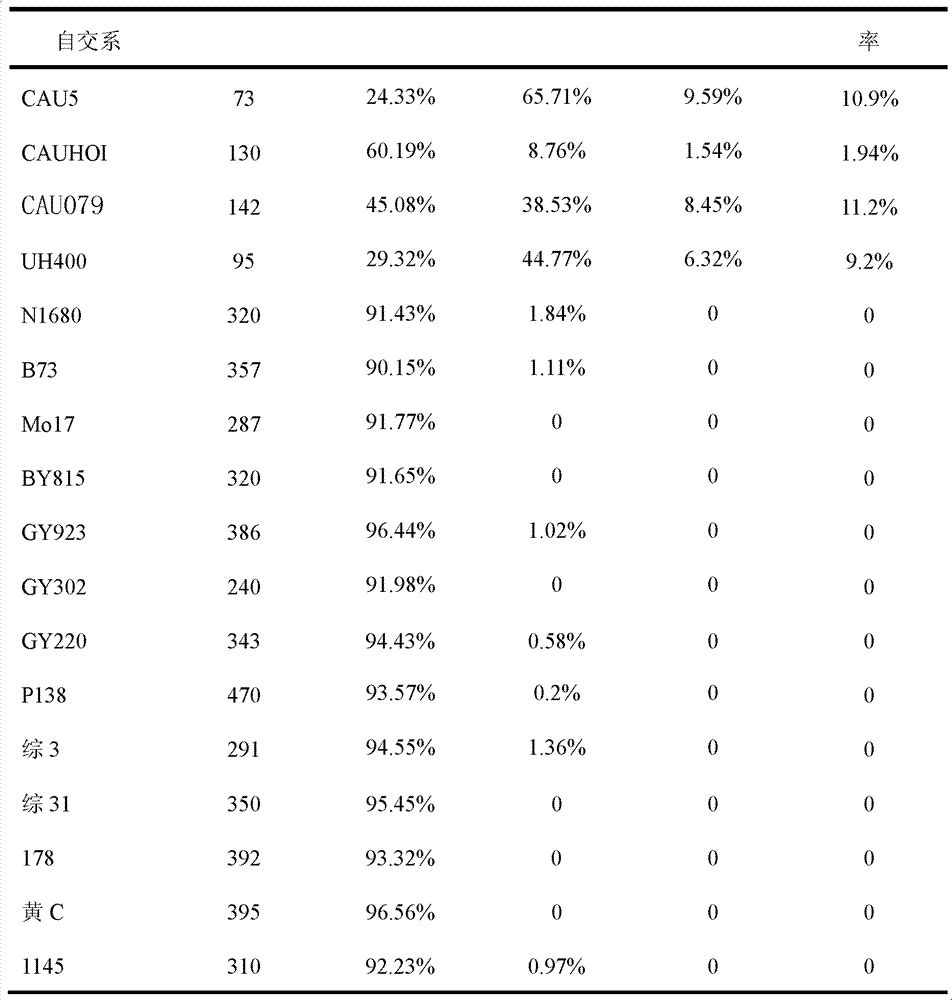Method for auxiliary identification of corn haploid induction line
A haploid inducible line, corn technology, applied in the directions of botanical equipment and methods, application, plant genetic improvement, etc., can solve the problems of inducible line non-scattering powder, economic loss, lack of fruit, etc., and achieves emphasis on screening and accelerated breeding. process, the effect of increasing the efficiency of breeding
- Summary
- Abstract
- Description
- Claims
- Application Information
AI Technical Summary
Problems solved by technology
Method used
Image
Examples
Embodiment 1
[0062] Example 1. In different inbred lines, the rate of haploid induction is significantly related to the fruitiness, endosperm abortion and embryo abortion of selfed ears
[0063] Maize inbred lines CAU5, CAUHOI, CAU079, UH400, N1680, B73, Mo17, BY815, GY923, GY302, GY220, P138, Zong 3, Zong 31, 178, Huang C, 1145. Among them, CAU5, CAUHOI, CAU079 and UH400 are haploid induction lines, and the rest are conventional inbred lines.
[0064] According to the above definitions, the self-fertilization rate, endosperm abortion rate, embryo abortion rate and haploid induction rate of the above 17 materials were analyzed, and the haploid induction rate of the 4 induced lines was carried out according to the above definition method. Haploid induction rates were not calculated for the remaining 13 conventional inbred lines. Studies have shown that maize is also diploid (2n=20), and the natural occurrence frequency of haploid (2n=10) is very low, only 0.1% (Chase SS. Monoploid frequenc...
Embodiment 2
[0074] Example 2, Application of Grain Firmness, Endosperm Abortion, and Embryo Abortion in the Breeding of Haploid Inducer Lines
[0075] 1. Materials
[0076] High-oil corn inbred line N1680: N1680 is a high-oil inbred line with an average oil content of 8%, no haploid induction rate, and no R-nj marker;
[0077] High-frequency haploid induction line CAU5: CAU5 is a high-frequency haploid induction line with an average induction rate of 10% and R-nj marker;
[0078] The species tested for induction rate was Zhengdan 958.
[0079] Two, the inventive method
[0080] The following experiments were all carried out at the Beijing Shangzhuang Experimental Station of China Agricultural University. Unless otherwise specified, the row length was 3m, the row spacing was 0.6m, and the plant spacing was 0.25m. Single seed was sown, with 13 seeds per row.
[0081] (1) Hybrid 1:
[0082] The induced line CAU5 is an early-maturing material, and it takes 65 days from sowing to loose pow...
PUM
 Login to View More
Login to View More Abstract
Description
Claims
Application Information
 Login to View More
Login to View More - R&D Engineer
- R&D Manager
- IP Professional
- Industry Leading Data Capabilities
- Powerful AI technology
- Patent DNA Extraction
Browse by: Latest US Patents, China's latest patents, Technical Efficacy Thesaurus, Application Domain, Technology Topic, Popular Technical Reports.
© 2024 PatSnap. All rights reserved.Legal|Privacy policy|Modern Slavery Act Transparency Statement|Sitemap|About US| Contact US: help@patsnap.com










